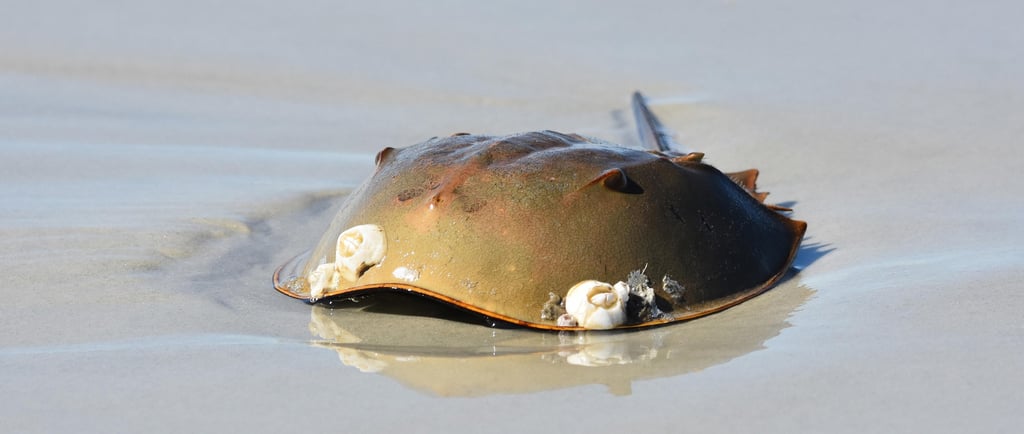🛡️ I, Horseshoe Crab: The Living Shield of the Ancient Shores 🌊
🛡️ A follow-up story that connects Life on Earth and the Timeline of Life chapters in the Biology Album. 🌊🕰️ It invites children to imagine the ancient shorelines of the Ordovician, where the horseshoe crab first scuttled through shallow seas—alongside trilobites and sea lilies. 🌿🦀 While so many of its neighbors vanished during mass extinctions, the horseshoe crab survived, barely changing for over 450 million years. This living fossil still lays its eggs under moonlight and breathes with book-like gills beneath its shielded shell. The story invites children to wonder: “What allows some creatures to survive unchanged, while others must adapt—or risk disappearing forever?” 🧠🌕
BIOLOGY STORIES
10/11/20242 min read


I am one of the oldest creatures on Earth, and I’ve been around for over 450 million years! 🌍🕰️ That’s right—long before dinosaurs walked the land, I was already exploring the ancient oceans. While many creatures from my time have vanished, I’ve survived through the ages, barely changing at all. Some call me a “living fossil” because I look almost the same as I did hundreds of millions of years ago.
Back in the Ordovician seas, I crawled along warm, shallow ocean floors, alongside creatures you might now see only in museums—like the trilobites and sea scorpions. 🌊🌿 Imagine the seafloor carpeted with waving sea lilies, trilobites marching like armored beetles, and silent waters above… I was already there.
You can spot me on the Timeline of Life, swimming among those sea lilies, I'm a horseshoe crab, and you might think I’m a crab because of my name—but my closest cousins are spiders and scorpions, not crabs or lobsters. 🕷️🌊My hard, horseshoe-shaped shell protects me like a shield, and I use my spiky tail, called a Tel 👏 son 👏—a word from Greek that means “end”—to help me flip over if I get stuck on my back. Don’t worry—it’s not a weapon, just a helpful tool! 🛡️🦀
I have a total of 10 eyes, some of which are on top of my shell and others are underneath, helping me find my way around and spot food. My 10 legs, hidden beneath my body, help me scuttle across the ocean floor as I search for clams, worms, and tiny bits of food to munch on. 🐚✨
And I still follow the rhythm of the moon. 🌕 When the moonlight sparkles on the water, it’s time to go ashore. Just as I have for millions of years, I climb onto sandy beaches to lay my eggs. Under the full moon, we gather in great groups, digging shallow nests. Birds feast on our eggs, fish follow us—but still we return, again and again. 🐦🐚
And here’s a secret: my blood is blue! 💙 That’s because it contains a special chemical that helps detect harmful bacteria. Scientists use it to make sure medicines are safe for humans. Even today, my blood helps protect life, saving millions of people around the world. 💙🔬
From ancient oceans to modern hospitals, my story has stretched across time. My shape, my ways, and my secret blue blood—these have helped me survive when so many others disappeared. I remind the world that even the oldest creatures still have new stories to tell.
🧐 I wonder… how has my ancient design helped me survive through mass extinctions? Why do some animals never need to change in order to survive, while others vanish forever? Can you find other creatures from my time that are still alive today?
I-narrative stories are best told aloud, allowing children to fully engage their imagination and connect deeply with the subject. Sometimes, we use charts or visual aids to spark even more curiosity and understanding. I tailor these stories because of my passion for storytelling and my desire to connect children with the world around them. Through stories, children can explore nature, history, art, biology, music, geometry, language, geography and the wonders of the universe in a way that feels memorable and alive.
With Montessori joy,
Vanina 😊

